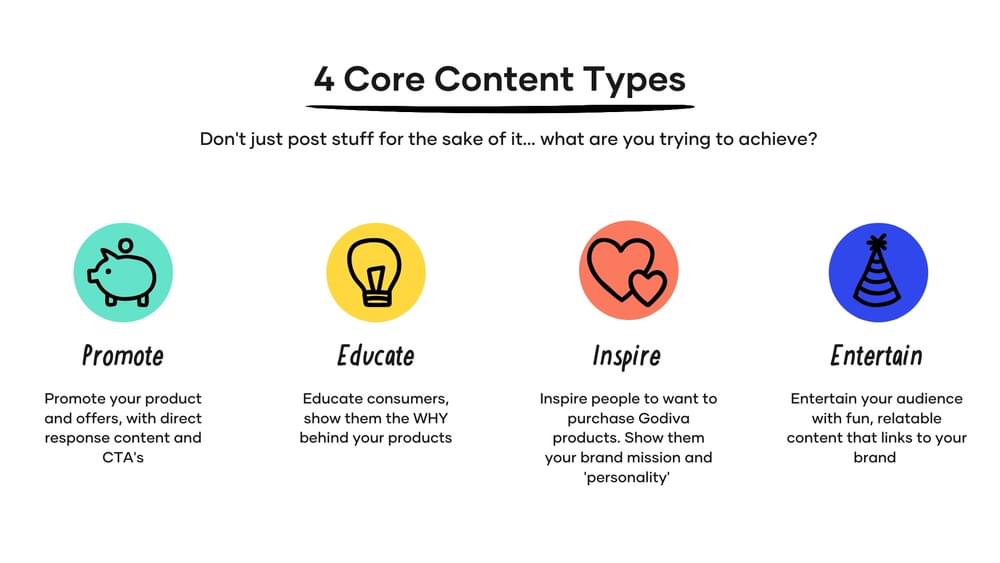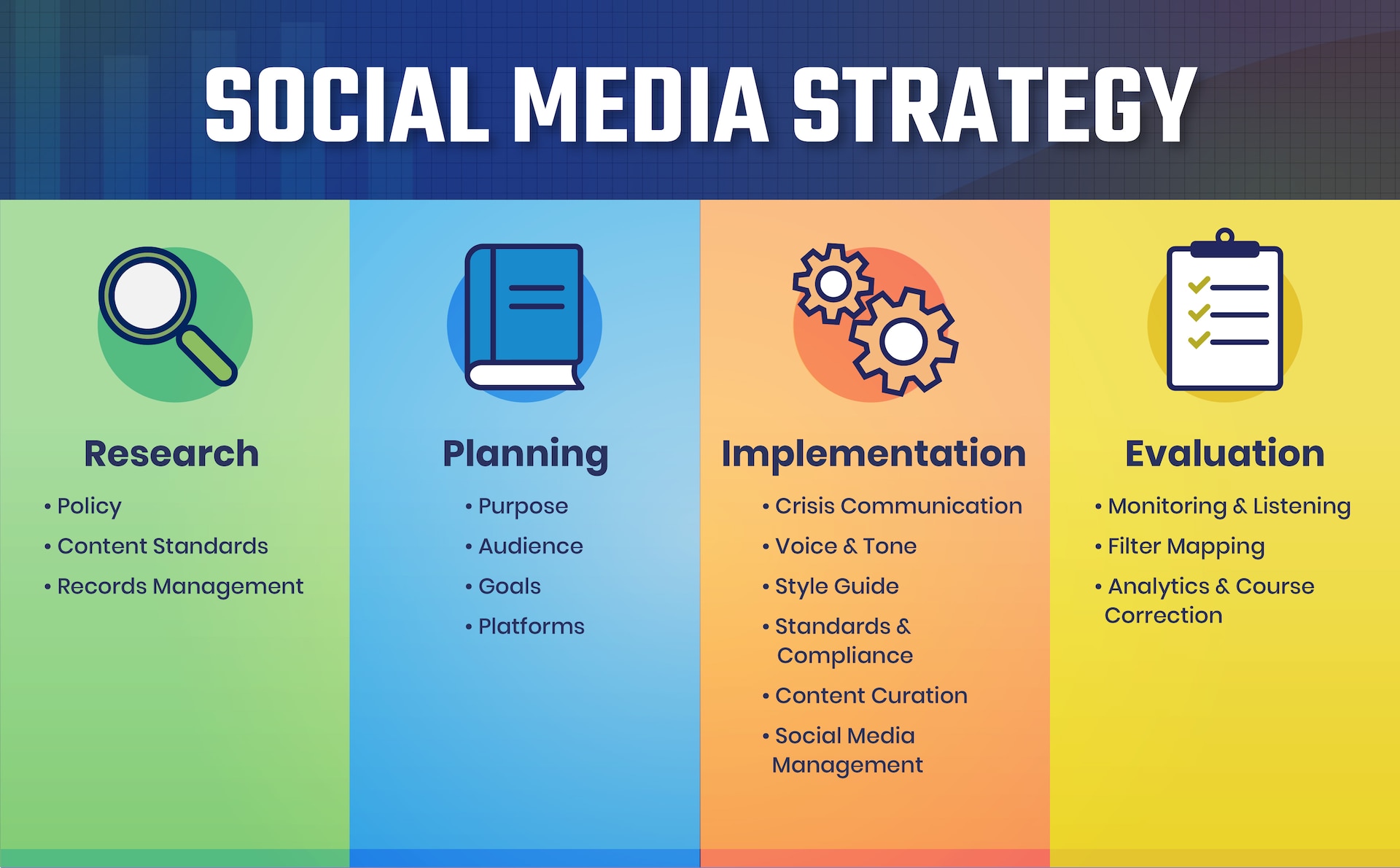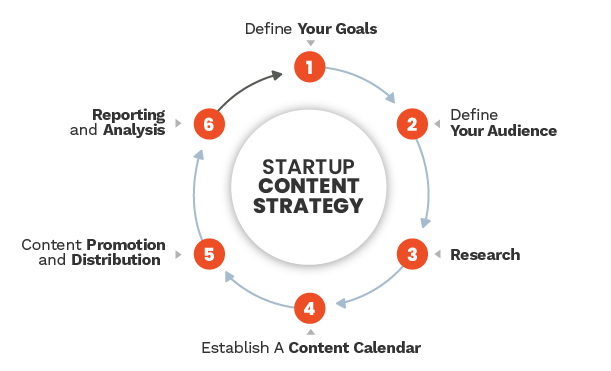
Social media content strategy is crucial for business success. It helps you reach your audience effectively.
Crafting a social media content strategy can seem daunting. But with the right approach, it becomes manageable. A well-planned strategy ensures your content aligns with business goals. It also engages your audience and drives results. Whether you’re new to social media or looking to improve, understanding the basics is key.
This guide will walk you through essential steps. From identifying your audience to creating compelling content. You’ll learn how to plan, execute, and measure your strategy. Ready to boost your social media presence? Let’s dive in and explore the foundations of a strong social media content strategy.
Table of Contents
Introduction To Social Media Content Strategy
Creating a social media content strategy is crucial in today’s digital age. It helps businesses and individuals connect with their audience. Without a clear strategy, efforts on social media can go unnoticed. This guide will introduce the basics of a social media content strategy.
Importance Of Strategy
A strategy gives direction and purpose. It ensures that content aligns with business goals. Consistent and relevant content keeps the audience engaged. A well-defined strategy helps in measuring success and making improvements. It saves time and resources by planning ahead.
Benefits For Growth
A strong content strategy boosts growth. It increases brand visibility and attracts more followers. Engaging content encourages shares and interactions. It builds trust and loyalty among the audience. Regular posting improves search engine rankings. Consistency in content helps in maintaining audience interest.

Credit: thesocialshepherd.com
Setting Clear Goals
Setting clear goals is crucial for an effective social media content strategy. Without clear goals, your efforts may lack direction. Goals provide a roadmap to guide your content creation and engagement activities. They help you measure progress and success over time.
Identifying Objectives
Start by identifying your main objectives. What do you want to achieve with your social media efforts? Common goals include increasing brand awareness, driving website traffic, and generating leads. Knowing your objectives helps you create relevant content that resonates with your audience.
Measuring Success
Measure success by tracking key performance indicators (KPIs). These metrics could include engagement rates, follower growth, and conversion rates. Regularly review these metrics to see if you are meeting your goals. Adjust your strategy based on what the data tells you.
Understanding Your Audience
Creating a successful social media content strategy starts with understanding your audience. Knowing who your audience is helps you create content that resonates with them. This guide will help you understand your audience through demographic analysis and creating personas.
Demographic Analysis
Demographic analysis involves gathering data about your audience’s characteristics. This includes age, gender, location, income, and education level. Knowing these details helps you tailor your content to meet their needs.
- Age: Different age groups have different interests.
- Gender: Men and women may prefer different types of content.
- Location: Content should be relevant to your audience’s location.
- Income: Income levels can influence buying behavior.
- Education: Education level can affect content preference.
Use tools like Google Analytics and social media insights to gather this data. This helps you create content that appeals to your target audience.
Creating Personas
Creating personas involves developing fictional characters that represent your audience segments. These personas help you understand your audience better.
- Identify your main audience segments.
- Create a detailed profile for each segment.
- Include information like age, gender, interests, and challenges.
For example:
| Persona | Age | Interests | Challenges |
|---|---|---|---|
| Tech-Savvy Tom | 25-35 | Gadgets, Software | Finding reliable tech reviews |
| Fitness Fanatic Fiona | 30-40 | Health, Exercise | Maintaining a workout routine |
Using these personas, you can create content that addresses their interests and challenges. This makes your content more relevant and engaging.
Content Planning And Scheduling
Content planning and scheduling are crucial for a successful social media strategy. They help you stay organized and consistent. Planning ensures that your content aligns with your goals. Scheduling saves time and ensures regular posting. Let’s dive into the key elements of content planning and scheduling.
Content Calendar
A content calendar is a visual plan for your social media posts. It shows what and when you will post. A calendar helps you plan ahead and avoid last-minute stress. Use it to balance different types of content. Make sure to include a mix of promotional, educational, and entertaining posts.
You can use tools like Google Sheets, Trello, or dedicated social media planners. These tools help you stay organized. They also allow you to collaborate with your team. Regularly review and update your calendar to stay on track.
Optimal Posting Times
Posting at the right time increases your content’s visibility. Different platforms have different peak times. Research and test to find the best times for your audience. Use insights from your social media analytics.
For example, Facebook might have peak times in the evening. LinkedIn may perform better during business hours. Keep track of your engagement rates. Adjust your posting schedule based on what works best.
Consistency is key. Stick to a regular posting schedule. This helps build trust with your audience. They will know when to expect new content from you.
Types Of Engaging Content
Creating engaging content is key to a successful social media strategy. Various types of content can help attract and retain your audience. Each type has its unique way of captivating your followers. Let’s explore two popular types of engaging content: visual content and interactive content.
Visual Content
Visual content includes images, videos, infographics, and memes. These formats are highly effective. Humans process visuals faster than text. Bright, colorful images catch the eye. Short, engaging videos hold attention. Infographics present data in an easy-to-understand format. Memes add humor and relatability. All these types of visual content can boost engagement on your social media platforms.
Interactive Content
Interactive content involves your audience directly. This includes polls, quizzes, contests, and live streams. Polls and quizzes are fun and informative. They encourage users to participate. Contests offer rewards, motivating followers to engage. Live streams allow real-time interaction. They create a sense of community. Interactive content makes your audience feel involved. This can lead to higher engagement rates.

Credit: pavilion.dinfos.edu
Leveraging Social Media Platforms
Social media platforms offer unique opportunities for businesses to connect with their audience. Each platform has distinct features and user demographics. A tailored strategy for each platform can maximize engagement and reach. Understanding how to leverage these platforms is crucial for a successful social media content strategy.
Platform-specific Strategies
Different social media platforms require unique approaches. On Facebook, longer posts and videos perform well. Facebook’s broad audience makes it ideal for community building. Instagram, on the other hand, thrives on visual content. High-quality images and short videos get more attention. Instagram Stories and Reels are also great for engagement.
Twitter is all about short, concise messages. Tweets with images or GIFs get more engagement. Use Twitter for real-time updates and customer service. LinkedIn is a professional network. Share industry news, articles, and job postings here. LinkedIn’s audience values educational and professional content.
Cross-platform Promotion
Promote your content across multiple platforms for better reach. Share your blog posts on Facebook, LinkedIn, and Twitter. Use Instagram to give a visual teaser of your content. Link back to your website or blog for more details. Cross-platform promotion increases visibility and drives traffic.
Each platform has its strengths. Use them to complement each other. For example, share a video on YouTube and snippets on Instagram and Twitter. Encourage your followers to check out your full video. This keeps your audience engaged across different platforms.
Utilizing Analytics Tools
Social media content strategy requires more than just posting regularly. To succeed, you need to know what works and what doesn’t. This is where analytics tools come in. They help you understand your audience and track the performance of your content. By using these tools, you can make informed decisions and adjust your strategies for better results.
Tracking Metrics
Tracking metrics is crucial for measuring the success of your social media content. Key metrics include:
- Engagement Rate: Measures likes, comments, and shares.
- Reach: Number of unique users who see your content.
- Impressions: Total number of times your content is displayed.
- Click-Through Rate (CTR): Percentage of users who click on your links.
- Conversion Rate: Percentage of users who take a desired action.
Use these metrics to understand what types of content resonate with your audience. You can then focus on creating more of that content.
Adjusting Strategies
Once you have tracked your metrics, it’s time to adjust your strategies. Use the insights gained from analytics tools to improve your content. Here are some steps to follow:
- Identify Top-Performing Content: Look for posts with high engagement and reach.
- Analyze Audience Behavior: Understand what your audience likes and dislikes.
- Test Different Formats: Experiment with videos, images, and text posts.
- Optimize Posting Times: Post when your audience is most active.
- Refine Targeting: Focus on the demographics that engage the most.
By adjusting your strategies based on data, you can create a more effective social media content plan. This leads to better engagement and higher conversion rates.

Credit: www.frac.tl
Building A Community
Building a community on social media is key to success. It helps brands connect with followers on a deeper level. A strong community fosters loyalty and engagement. This, in turn, leads to increased visibility and growth. Let’s explore how to build a community effectively.
Engaging With Followers
Engagement is crucial for community building. Respond to comments and messages quickly. Show appreciation for your followers’ support. Share user-generated content to make followers feel valued. Ask questions and encourage discussions. This creates a two-way communication channel. It makes followers feel heard and appreciated.
Creating A Sense Of Belonging
A sense of belonging strengthens community bonds. Use inclusive language in your posts. Share stories and experiences that resonate with your audience. Celebrate milestones and achievements together. This makes followers feel like part of a family. Host events like live Q&A sessions or virtual meetups. These activities help build stronger connections. They foster a sense of unity and belonging.
Staying Updated With Trends
Staying updated with trends is essential in creating an effective social media content strategy. Trends shift quickly, and staying current helps keep your audience engaged. To remain relevant, you must keep an eye on industry changes and adapt your content to new trends.
Monitoring Industry Changes
Regularly check industry news. This helps you spot emerging trends early. Subscribe to newsletters from key industry leaders. Follow influential figures on social media. Use tools like Google Alerts to track specific keywords related to your niche. Staying informed allows you to adjust your strategy quickly.
Adapting To New Trends
Once you identify new trends, integrate them into your content. Experiment with different formats and styles. For instance, if short videos are trending, create more video content. Analyze the performance of new trends in your posts. This helps you understand what resonates with your audience. Stay flexible and ready to pivot your strategy as trends evolve.
Frequently Asked Questions
What Is A Social Media Content Strategy?
A social media content strategy is a plan for creating and sharing content. It helps meet business goals and engage the audience.
Why Is Social Media Content Strategy Important?
It ensures consistent, relevant content for your audience. This boosts engagement, brand awareness, and helps achieve marketing objectives.
How Do You Create A Content Strategy?
Start by defining goals, understanding your audience, and choosing the right platforms. Plan content, schedule posts, and analyze results.
What Content Should I Post On Social Media?
Post a mix of educational, entertaining, and promotional content. Share industry news, tips, behind-the-scenes, and user-generated content.
Conclusion
Crafting a social media content strategy ensures consistent and effective engagement. Focus on understanding your audience’s needs and preferences. Plan your content calendar with a variety of posts. Track performance and adjust your strategy for better results. Keep your content fresh, relevant, and engaging.
Engage with your followers regularly to build trust and loyalty. Remember, successful social media strategy requires patience and persistence. Stay committed, and your efforts will pay off. Happy posting!